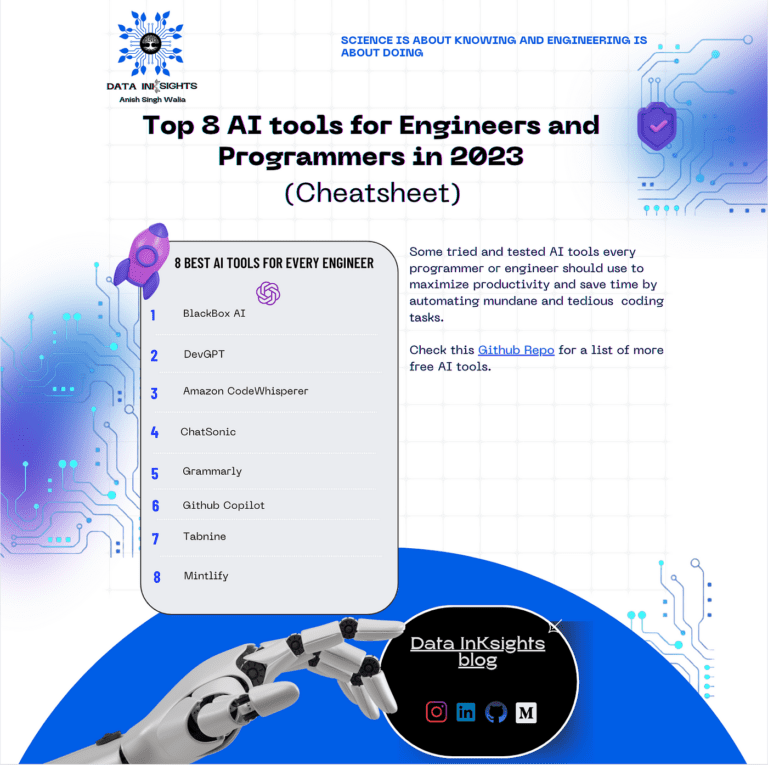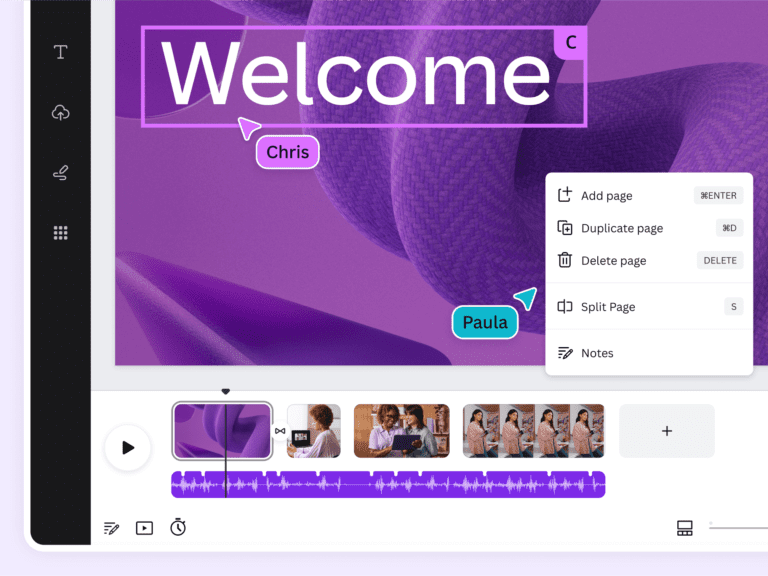Best AI Tool for Audio Editing: Unleash Sonic Perfection
The best AI tool for audio editing is Adobe Audition. It offers advanced features like noise reduction, sound restoration, and intelligent editing options.
Audio editing can be daunting, especially for beginners. The right tools can simplify the process and enhance audio quality. AI-powered software has emerged as a game-changer, making editing faster and more efficient. These tools can automatically detect and eliminate background noise, adjust levels, and even provide real-time suggestions for improvement.
Whether you are a podcaster, musician, or content creator, choosing the right AI audio editing tool can elevate your projects. Understanding your needs will help you find the perfect solution to streamline your workflow and achieve professional results. Explore the various options available to find the best fit for your audio editing tasks.

Credit: jonnyelwyn.co.uk
Introduction To AI In Audio Editing
AI is changing audio editing. It makes tasks easier and faster. Users can enhance sounds like never before. This technology helps both amateurs and professionals.
The Rise Of AI Tools
The past few years saw a boom in AI tools. These tools improve audio quality and reduce editing time. Many software options are now available. They offer features that were once time-consuming.
- Automatic noise reduction
- Smart audio mixing
- Voice enhancement
- Transcription services
Each tool uses advanced algorithms. They analyze audio data to provide better outcomes. Users can focus on creativity instead of tedious tasks.
Impacts On The Audio Industry
AI tools are reshaping the audio industry. They provide new opportunities for creators. Here are some key impacts:
- Cost-effective solutions for small projects.
- Increased accessibility for beginners.
- Faster production times for professionals.
AI also improves collaboration. Teams can work together more effectively. The technology allows seamless sharing of audio files. This leads to a more productive workflow.
| AI Tool | Key Feature | Best For |
|---|---|---|
| Descript | Audio transcription | Podcasters |
| Auphonic | Automatic leveling | Musicians |
| Adobe Audition | AI-driven sound removal | Professionals |
AI tools are transforming how audio is created and edited. They save time and improve quality. This is just the beginning of an exciting journey.
Criteria For Evaluating AI Audio Tools
Choosing the right AI audio editing tool can be challenging. Different tools offer various features. Here are key criteria to help you make the best choice.
Accuracy And Quality
Quality is essential in audio editing. Look for tools that deliver high accuracy. This means clear sound and minimal distortion.
- Sound Clarity: Ensure the tool maintains audio fidelity.
- Noise Reduction: It should effectively remove background noise.
- Dynamic Range: Check if it handles quiet and loud sounds well.
Ease Of Use
User-friendly interfaces save time. Simple navigation helps beginners. Key aspects include:
- Intuitive Design: Easy to understand layout.
- Quick Access: Fast access to features and tools.
- Help Resources: Tutorials and support are available.
Feature Set
A robust feature set enhances editing capabilities. Look for:
| Feature | Importance |
|---|---|
| Multi-Track Editing | Allows layering of sounds. |
| Auto-Editing | Saves time with automated adjustments. |
| Effects Library | Offers various sound effects. |
| Export Options | Supports multiple file formats. |
Integration And Compatibility
Compatibility with other software is crucial. Check if the tool works with:
- DAWs (Digital Audio Workstations): Seamless integration enhances workflow.
- Plugins: Support for additional effects and features.
- File Formats: Ability to import and export various formats.
Top AI Audio Editing Tools
Choosing the right AI audio editing tool can transform your projects. These tools simplify tasks and enhance audio quality. Here are the top tools worth exploring.
Descript
Descript is a powerful tool for audio editing. It uses AI to transcribe audio into text. This feature allows easy editing by removing or changing words. Users can edit audio like a text document. Key features include:
- Overdub: Create voiceovers using your own voice.
- Screen Recording: Capture video and audio simultaneously.
- Collaboration: Share projects with team members effortlessly.
Adobe Audition’s AI Features
Adobe Audition includes smart AI tools. These tools improve audio quality with minimal effort. Key features are:
- Auto-Ducking: Automatically balances music and dialogue levels.
- Sound Remover: Eliminates unwanted sounds from recordings.
- Speech Volume Leveler: Ensures consistent voice volume throughout tracks.
These features make Adobe Audition a favorite among professionals.
Izotope Rx
iZotope RX is a leading audio repair tool. It uses AI to fix audio problems. Key highlights include:
| Feature | Description |
|---|---|
| De-click | Removes clicks and pops from audio. |
| De-hum | Eliminates unwanted hum frequencies. |
| Spectral Repair | Repairs audio by visualizing sound frequencies. |
iZotope RX is ideal for restoring audio in various formats.
Sonible’s Smart:EQ
Sonible’s smart:EQ is an innovative equalization tool. It analyzes audio and suggests EQ settings. Key features include:
- Real-time Analysis: Adjusts EQ based on audio input.
- Adaptive Frequency Control: Enhances clarity and balance.
- User-Friendly Interface: Easy to use for beginners and pros alike.
This tool helps achieve professional sound quality quickly.

Credit: m.youtube.com
Deep Dive: Descript’s Overdub Feature
Descript’s Overdub feature is a game-changer for audio editing. It allows users to create custom voice models. This technology makes editing spoken content seamless and efficient.
Creating Custom Voice Models
With Overdub, users can create their own voice models. Follow these simple steps:
- Record your voice using Descript.
- Submit a script for training the model.
- Wait for the AI to process your voice.
This feature uses advanced AI to mimic your voice. It captures your tone, pitch, and inflection. This results in a voice that sounds just like you.
Editing Spoken Content
Editing audio has never been easier with Overdub. Here’s how it streamlines the process:
- Replace words with a simple text edit.
- Maintain the natural flow of speech.
- Ensure consistency in audio quality.
With Overdub, mistakes become easy to fix. Users can edit out errors without re-recording. This saves time and enhances productivity.
| Feature | Benefit |
|---|---|
| Custom Voice Models | Mimics your unique voice perfectly. |
| Text-Based Editing | Edit audio by changing text. |
| Natural Sounding | Maintains speech flow after edits. |
Descript’s Overdub feature makes audio editing simple. Create, edit, and produce high-quality audio easily.
Adobe Audition’s AI Enhancements
Adobe Audition has transformed audio editing with its powerful AI enhancements. These features simplify complex tasks. Users save time while achieving professional results.
Auto-ducking
Auto-Ducking is a game-changer in audio production. It automatically lowers background music when speech occurs. This feature ensures clear dialogue without manual adjustments.
- Easy to use
- Saves time
- Enhances audio clarity
Auto-Ducking adjusts levels based on your settings. You can customize the sensitivity and threshold. This feature is perfect for podcasts and videos.
Ambient Sound Match
Ambient Sound Match creates a cohesive listening experience. It analyzes background sounds and matches them seamlessly. This feature enhances the overall quality of your audio.
- Balances sound levels
- Improves audio continuity
- Reduces noise distractions
With just a few clicks, you can match different sound environments. This makes transitions smoother and more professional.
Speech Volume Leveler
The Speech Volume Leveler ensures consistent voice levels. It automatically adjusts volume variations in speech recordings. This feature is essential for voiceovers and interviews.
- Maintains even audio levels
- Enhances listener experience
- Reduces editing time
Users can focus on creativity instead of technical adjustments. This tool guarantees a polished final product.

Credit: www.soundstripe.com
Izotope Rx: The Restoration Master
iZotope RX is a powerful tool for audio editing. It specializes in cleaning up audio files. This software is known for its advanced restoration features. Whether you’re a professional or a beginner, iZotope RX can help you achieve great results.
Noise Reduction
Noise reduction is one of the standout features of iZotope RX. It helps eliminate unwanted sounds from your audio. This feature is crucial for achieving clear recordings. Here are some key benefits:
- Real-time processing: See changes as you make them.
- Intelligent algorithms: Automatically detect noise patterns.
- Multiple modes: Tailor noise reduction to your needs.
iZotope RX uses machine learning. This makes it efficient and effective. You can clean up dialogue, music, and field recordings easily. The results are professional and polished.
Audio Repair
Audio repair tools are essential for fixing issues in recordings. iZotope RX offers various tools for this purpose. Here’s a list of useful features:
- De-click: Remove clicks and pops from recordings.
- De-hum: Eliminate unwanted hum and buzz.
- De-reverb: Reduce excessive reverb in audio.
These tools make it simple to restore audio quality. Users can repair damaged files with ease. The user-friendly interface makes navigation straightforward.
| Feature | Description |
|---|---|
| De-click | Removes clicks and pops from audio. |
| De-hum | Eliminates unwanted hum and buzz sounds. |
| De-reverb | Reduces excessive reverb in recordings. |
iZotope RX stands out for audio repair. It provides tools that are easy to use. Enjoy high-quality audio in your projects with iZotope RX.
AI In Music Production
Artificial Intelligence is changing how music is made. It helps producers create high-quality audio efficiently. Tasks that took hours can now be completed in minutes. Musicians can focus more on creativity and less on technical details.
AI tools enhance various aspects of music production. They simplify processes like mixing and mastering. The technology adapts and learns from user preferences. This leads to a more personalized experience. Let’s explore two key areas: automatic mixing and mastering with AI.
Automatic Mixing
Automatic mixing uses AI to balance audio tracks. It analyzes each sound and adjusts levels. This makes the music sound polished and professional.
- Reduces time spent on mixing.
- Improves sound quality with precise adjustments.
- Customizable settings for different music genres.
Popular AI tools for automatic mixing include:
| Tool Name | Features | Price |
|---|---|---|
| Landr | Fast mixing, genre-specific settings | Starts at $10/month |
| iZotope Ozone | AI-assisted mixing, user-friendly interface | Starts at $129 |
| Sonible Smart:EQ | Automatic EQ adjustments, spectral analysis | Starts at $149 |
Mastering With Ai
Mastering is the final step in music production. AI simplifies this process as well. It ensures tracks are ready for distribution.
- Consistent loudness levels across tracks.
- Enhanced clarity for all audio elements.
- Faster turnaround time for final mixes.
Some leading AI mastering tools are:
| Tool Name | Features | Price |
|---|---|---|
| LANDR | Instant mastering, cloud-based platform | Starts at $10/month |
| eMastered | Simple interface, genre-specific presets | Starts at $19.99 |
| CloudBounce | Real-time mastering, unlimited exports | Starts at $10/month |
AI tools in music production deliver efficiency and quality. They allow artists to create better music, faster.
The Future Of AI in Audio Editing
The future of AI in audio editing is exciting and transformative. AI tools will enhance creativity and streamline workflows. These technologies will make audio editing faster and more accessible. Let’s explore what advancements are on the horizon and the potential challenges that may arise.
Advancements On The Horizon
Several advancements are shaping the future of audio editing:
- Automated Mixing: AI can balance sound levels automatically.
- Real-Time Sound Correction: Tools will fix audio issues instantly.
- Intelligent Sound Design: AI can generate unique soundscapes.
- Voice Cloning: Users can create realistic voiceovers effortlessly.
These advancements can save time and improve the quality of audio projects. AI will empower musicians, podcasters, and content creators.
Potential Challenges
Despite the benefits, some challenges may arise:
- Quality Control: AI-generated audio might lack human touch.
- Ethical Concerns: Voice cloning raises issues of consent.
- Job Displacement: Automation may threaten some audio editing jobs.
- Data Privacy: Using AI requires handling sensitive data responsibly.
Addressing these challenges is crucial for a balanced future. The audio industry must adapt to these changes wisely.
Choosing The Right AI Audio Tool
Finding the perfect AI audio tool can be challenging. Many options exist, each with unique features. Selecting the right one boosts your audio projects significantly. Understanding your needs helps narrow down choices.
Assessing Your Needs
Start by identifying your audio editing goals. Consider these questions:
- What type of audio will you edit?
- Do you need features like noise reduction?
- Is real-time collaboration important?
- What is your skill level with audio editing?
Write down your requirements. This list will guide your search. Focus on tools that match your specific needs.
Comparing Options
Once you know your needs, compare different tools. Here’s a simple table to help:
| Tool Name | Key Features | Price |
|---|---|---|
| Tool A | AI noise reduction, user-friendly interface | $29/month |
| Tool B | Real-time collaboration, multi-format support | $19/month |
| Tool C | Advanced editing tools, cloud storage | $49/month |
Check reviews and watch tutorials. This helps understand user experiences. Focus on the features that matter most to you.
Making The Investment
Consider your budget before making a choice. Evaluate the long-term benefits of each tool. Sometimes, paying more results in better features and support.
Think about a free trial. Many tools offer trials. This allows you to test functionality without commitment.
Weigh the pros and cons carefully:
- Cost vs. features
- User reviews
- Customer support
Choose a tool that fits your needs and budget. Investing wisely leads to better audio quality.
Real-world Applications And Case Studies
The best AI tools for audio editing transform various industries. They enhance creativity and efficiency. Let’s explore some key applications in real-world settings.
Podcast Production
AI tools simplify podcast production tasks. They help with editing, noise reduction, and sound balancing. Here are some popular uses:
- Automatic Editing: AI cuts out silences and mistakes.
- Sound Enhancement: Tools improve audio quality in seconds.
- Transcription: AI generates text from audio for show notes.
Podcasters like Joe Rogan use AI tools. They speed up workflows and improve sound quality. This leads to a better listening experience.
Music Industry
AI tools revolutionize the music industry. They assist artists and producers in various ways:
- Mixing and Mastering: AI analyzes tracks for perfect balance.
- Sound Design: Tools create unique soundscapes and effects.
- Music Composition: AI helps in writing new melodies.
Many artists, like Taryn Southern, use AI in their work. They discover new sounds and push creative boundaries. This technology makes music production faster and easier.
Film And Video Post-production
AI tools play a vital role in film and video editing. They help streamline post-production tasks:
- Dialogue Editing: AI cleans up audio tracks quickly.
- Sound Effects: Tools generate realistic sound effects.
- Score Composition: AI assists in creating background music.
Filmmakers like Steven Spielberg use AI to improve sound quality. It saves time and enhances the overall production value. This technology allows for creative freedom in editing.
Ethical Considerations In AI Audio Editing
AI audio editing tools offer great benefits. They improve efficiency and creativity. Yet, they also raise important ethical questions. Understanding these issues is essential for responsible use.
Voice Cloning Concerns
Voice cloning technology can mimic any voice. This can be exciting but also risky. Here are some key concerns:
- Identity Theft: Cloned voices can impersonate individuals.
- Misleading Information: Fake audio can spread false news.
- Emotional Manipulation: Cloned voices may exploit feelings.
These issues highlight the need for caution. Users must understand the impact of their actions.
Consent And Intellectual Property
Using someone’s voice without permission is unethical. Consent is crucial in audio editing. Consider these points:
- Obtain Permission: Always ask before using someone’s voice.
- Respect Ownership: Voice recordings are intellectual property.
- Transparency: Be clear about how you will use audio.
Failing to address these matters can lead to serious consequences. Respect for individuals’ rights is key.
User Tips And Best Practices
To maximize your experience with AI audio editing tools, follow these practical tips. They will help you work efficiently and achieve better results.
Optimizing Workflows
Streamlining your workflow is key to effective audio editing. Use these tips to enhance your process:
- Create a template: Set up a standard project template.
- Organize files: Keep audio files in labeled folders.
- Batch process: Edit multiple files at once.
- Utilize keyboard shortcuts: Learn shortcuts for faster actions.
- Regularly save projects: Avoid data loss by saving often.
Staying Updated With AI Trends
The AI landscape is always changing. Keep your skills sharp with these strategies:
- Follow industry blogs: Read about the latest AI audio tools.
- Join online forums: Engage with other audio editors.
- Attend webinars: Learn from experts in live sessions.
- Subscribe to newsletters: Get updates straight to your inbox.
- Experiment with new tools: Try out different AI software.
Stay curious and embrace new technologies. This will keep your audio editing skills relevant.
Frequently Asked Questions
What Is The Best AI Tool For Audio Editing?
The best AI tool for audio editing varies based on your needs. Popular options include Adobe Audition, Descript, and Auphonic. These tools offer advanced features like noise reduction and automatic transcription. They enhance audio quality while saving time for professionals and beginners alike.
How Does AI Improve Audio Editing?
AI improves audio editing by automating tedious tasks. It can enhance audio quality through noise reduction and equalization. Additionally, AI tools can transcribe spoken words into text, making editing more efficient. This allows creators to focus on the creative aspects of their projects.
Can Beginners Use AI Audio Editing Tools?
Yes, beginners can easily use AI audio editing tools. Many of these tools have user-friendly interfaces and tutorials. Features like automatic adjustments simplify the editing process. As a result, even those with minimal experience can produce high-quality audio content.
Are AI Audio Editing Tools Worth The Investment?
AI audio editing tools are often worth the investment for many users. They save time and improve audio quality significantly. For content creators and professionals, the efficiency gained can lead to better productivity. Ultimately, the right tool can enhance your overall audio editing experience.
Conclusion
Choosing the best AI tool for audio editing can transform your projects. With numerous options available, consider your specific needs and workflow. Each tool offers unique features that can enhance your editing process. Take the time to explore and find the perfect fit for your creative endeavors.
Happy editing!






